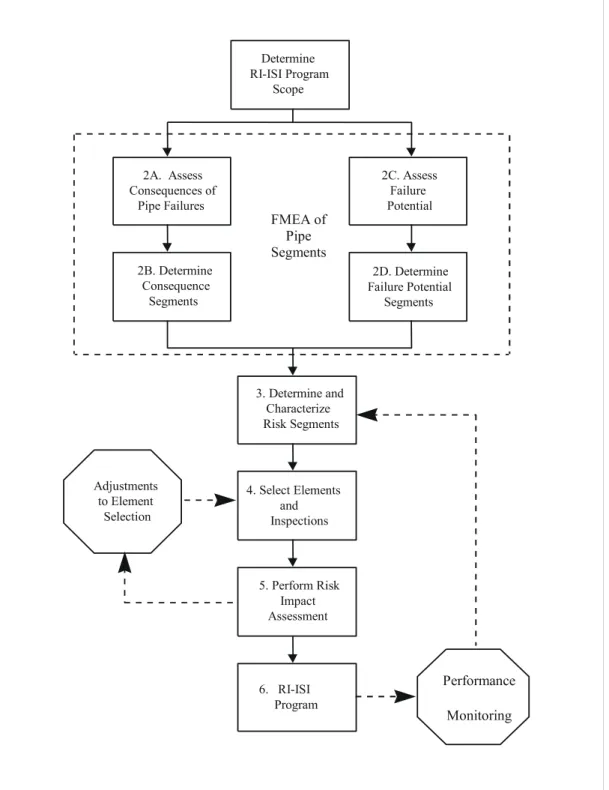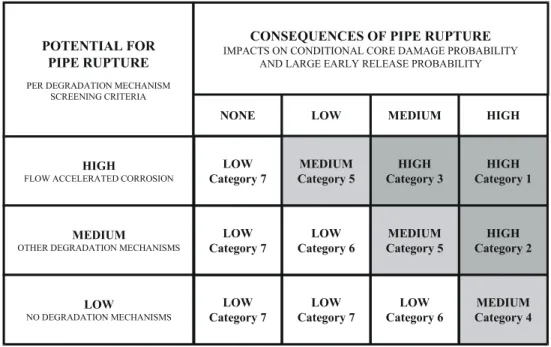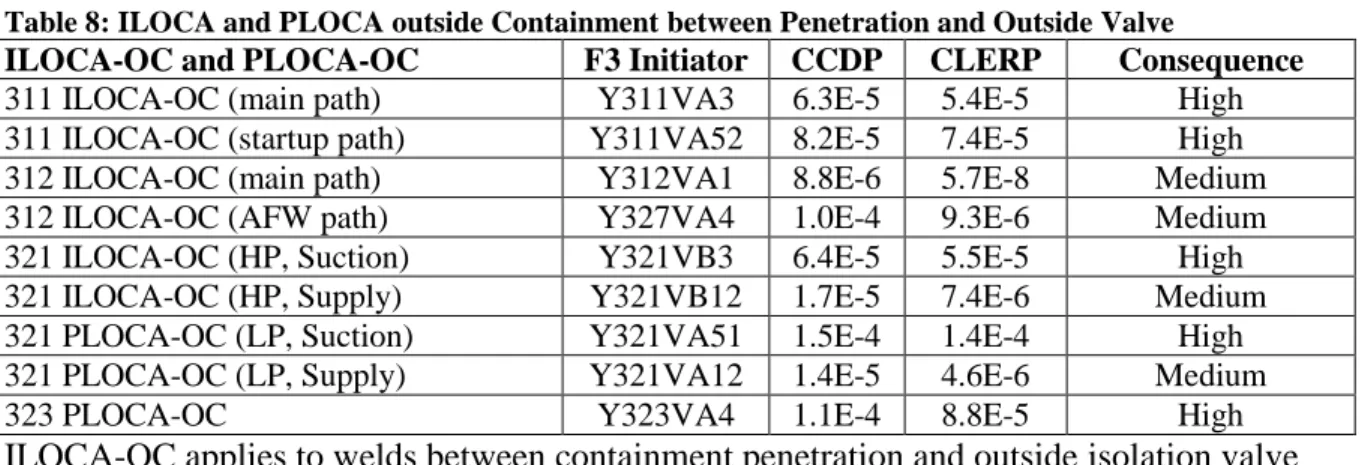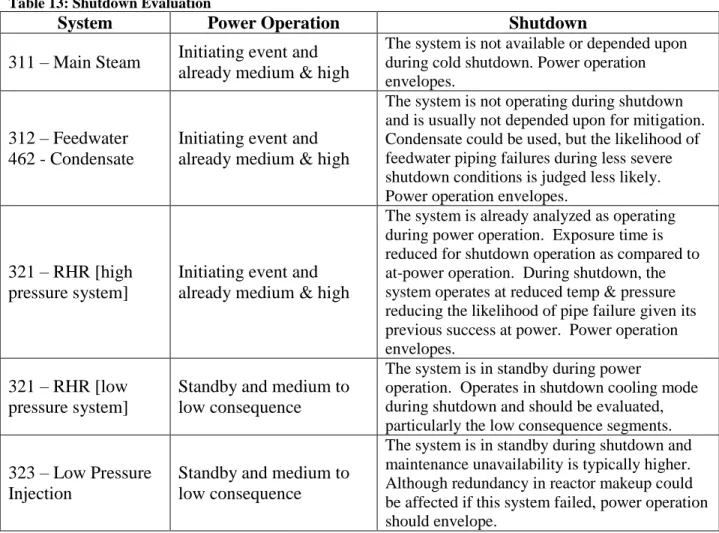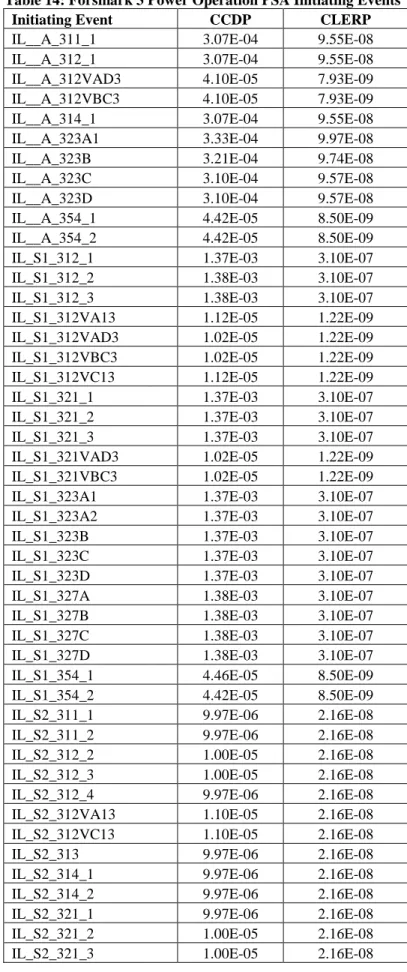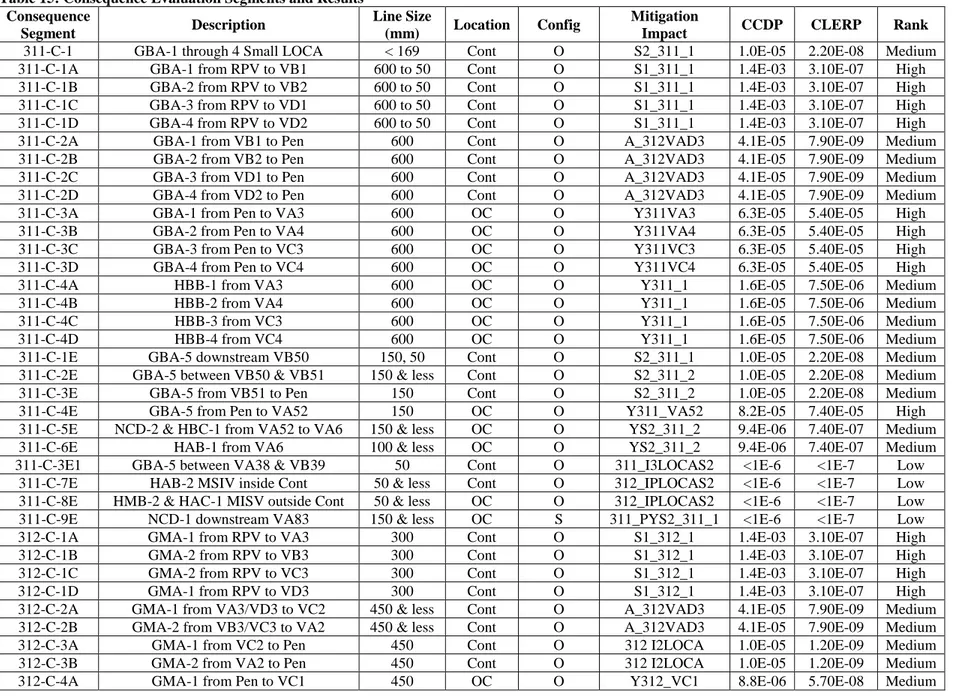Research
2010:42
Using the EPRI Risk-Informed ISI
Metho-dology on Piping Systems in Forsmark 3
Authors: Patrick O’Regan
Jim Moody
Jan Lötman
Johan Sandstedt
Title: Using the EPRI Risk-Informed ISI Methodology on Piping Systems in Forsmark 3
Report number: 2010:42
Author: Patrick O’Regan1), Jim Moody2), Jan Lötman3) and Johan Sandstedt4)
1)Electric Power Research Institute, Knoxville, USA. ,
2)JHM Consulting, Strafford, USA.
3)Forsmarks Kraftgrupp AB.
4)Risk Pilot AB, Stockholm
Date: December 2010
This report concerns a study which has been conducted for the Swedish
Radiation Safety Authority, SSM. The conclusions and viewpoints
present-ed in the report are those of the author/authors and do not necessarily
coincide with those of the SSM.
SSM Perspective
Background
In the SSM regulation SSMFS 2008:13, it is stated that the selection of
lo-cations for inspection of mechanical components shall be based upon the
risk for core damage or the risk of release of radioactive substances. Both
qualitative and quantitative measures of the relative risk are allowed to be
used. So far only the PWRs in Sweden are using a quantitative procedure
to evaluate the risk whereas all the BWRs are using a qualitative risk
pro-cedure based upon the so-called damage index and consequence index.
All Nuclear Power Plants in Sweden have a fairly detailed PSA analyses
and it is now of interest to find out if such PSA analyses can assist the
selection of piping components for inspection also for BWRs. The
EPRI-procedure is a semi-quantitative methodology which uses the PSA
infor-mation together with the assessment of the failure potential from different
degradation mechanisms to perform a risk evaluation.
Objectives of the project
The principal objective of the project is to use the EPRI procedure for
risk-informed In-Service Inspection to select piping components for
inspection and compare the outcome with the presently used qualitative
risk procedure on Forsmark 3.
Results
Five piping systems in Forsmark 3 were chosen for the pilot study, main
steam 311, feedwater line 312, residual heat removal 321, low pressure
injection 323 and the condensate system 462. The results of the risk
ranking show a general similarity between the EPRI procedure and the
present qualitative risk procedure. Certain differences have been found,
for example:
• No pipe system were assigned high consequence (consequence
index 1) with the qualitative risk procedure whereas several pipe
segments using the EPRI procedure were ranked to be high
conse-quence based on the plant PSA analysis.
